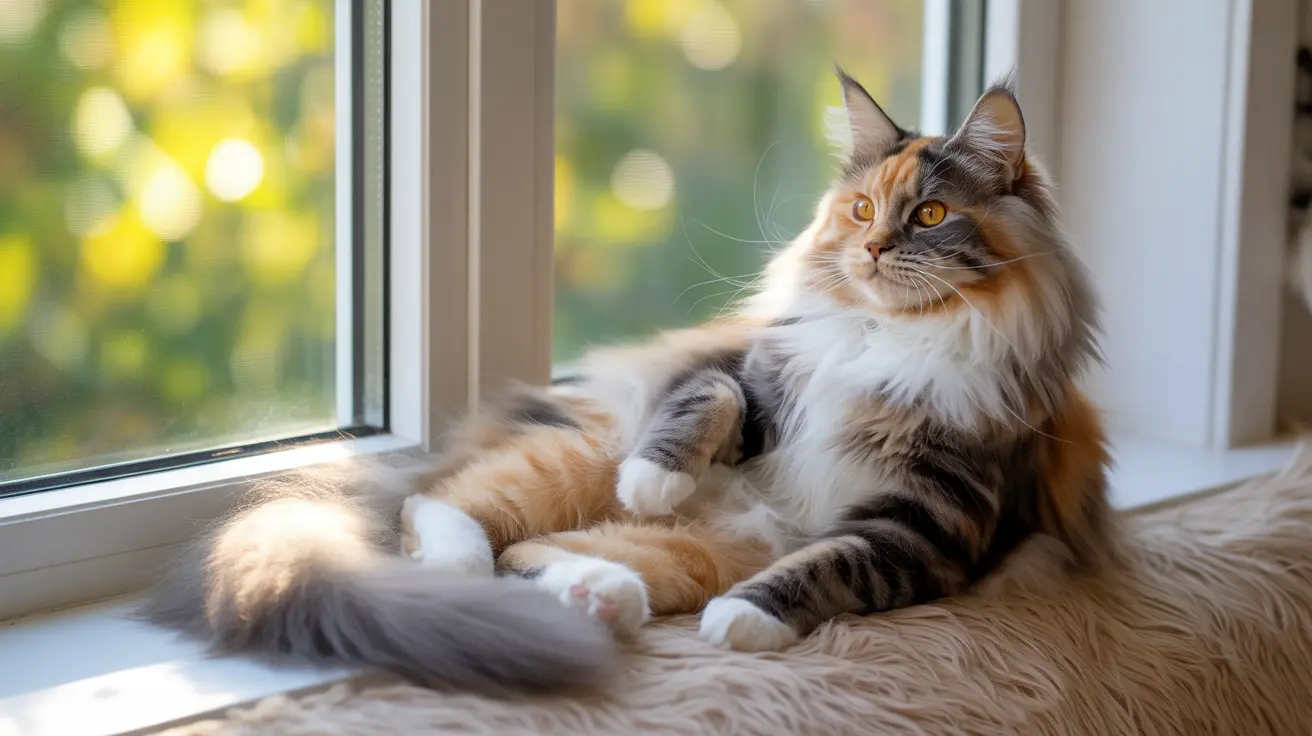Calico cats, with their striking tri-colored coats, have fascinated cat lovers for centuries. These unique felines, known for their distinctive patches of white, orange, and black fur, have an intriguing history that traces back to ancient civilizations. Understanding where calico cats come from not only reveals their fascinating journey across continents but also helps explain their special place in various cultures worldwide.
The story of calico cats begins in ancient Egypt, where they first emerged and later spread across the globe through maritime trade routes. Their remarkable appearance and the complex genetics behind their coat pattern have made them subjects of both scientific study and cultural significance.
Ancient Egyptian Origins
Historical evidence and genetic studies trace the origins of calico cats to ancient Egypt. The orange mutant gene, which is crucial for creating the calico pattern, first appeared in Northern Africa. Egyptian merchants and traders valued these cats not just for their unique appearance but primarily for their exceptional rodent-hunting abilities.
These early calicos served as both practical pest controllers and companions to Egyptian families, earning a respected place in Egyptian society. Their effectiveness in controlling vermin populations made them particularly valuable on trading vessels, which would ultimately facilitate their spread beyond Egyptian borders.
Mediterranean Expansion and Global Journey
From Egypt, calico cats began their journey across the Mediterranean Sea aboard merchant ships. As these vessels traveled to various port cities in Greece, France, Spain, and Italy, they inadvertently transported these distinctive felines to new shores. The cats' presence on ships served a dual purpose: controlling rodent populations that threatened grain cargo and, according to sailor folklore, bringing good luck to their voyages.
Over centuries, calico cats established themselves in various European ports, gradually spreading inland and becoming integrated into local communities. Their unique appearance earned them special names and cultural significance in different regions, from "tobi mi-ke" in Japan to "lapjeskat" in Dutch-speaking areas.
The Genetics Behind Calico Coloration
The fascinating genetic makeup of calico cats helps explain their rarity and why they're predominantly female. The calico pattern results from a complex interaction of genes located on the X chromosome. This genetic peculiarity means that female cats, with their two X chromosomes, are almost exclusively the ones who can display the full tri-color pattern.
Male calicos are extremely rare, occurring in only about 1 in 3,000 cases. These males typically have an extra X chromosome (XXY), a condition known as Klinefelter syndrome, which usually renders them sterile. This genetic uniqueness has made calico cats particularly interesting to researchers studying color inheritance and sex-linked traits.
Cultural Impact and Significance
Throughout history, calico cats have earned special status in various cultures. In Japan, they're considered powerful symbols of good luck, featured in the famous "maneki-neko" (beckoning cat) figurines found in shops and homes. Maritime traditions hold that having a calico cat aboard brings good fortune to the vessel and its crew.
The term "calico" itself has an interesting origin, borrowed from the name of patterned fabric from India that resembled the cats' multi-colored coats. This naming convention, adopted by American settlers, has become the standard term for these tri-colored felines in English-speaking regions.
Frequently Asked Questions
Where are calico cats originally from, and how did they spread across the globe?
Calico cats originated in ancient Egypt, spreading globally through Mediterranean maritime trade routes. Egyptian merchants carried them aboard ships for pest control, leading to their establishment in various port cities and eventual worldwide distribution.
Why are almost all calico cats female, and what are the chances of a male calico?
About 99.9% of calico cats are female due to the genetic requirement of two X chromosomes for the tri-color pattern. Male calicos occur in only 1 in 3,000 cases, typically due to a rare genetic condition called Klinefelter syndrome (XXY chromosomes).
How do calico cats acquire their unique mix of white, black, and orange fur through genetics?
The calico pattern results from X-chromosome inactivation in female cats. One X chromosome carries the gene for orange fur, while the other carries the gene for black fur. Random inactivation of one X chromosome in each cell during early development creates the distinctive patched pattern.
What is the difference between a calico and a tortoiseshell cat in terms of coat pattern and genetics?
Calico cats have distinct patches of white, black, and orange, while tortoiseshell cats typically lack the white coloring and show a more mottled mix of black and orange. Both patterns result from similar genetic mechanisms, but the white spotting gene distinguishes calicos.
Are calico cats considered a specific breed, or can any cat breed have a calico pattern?
Calico is not a breed but a color pattern that can appear in many different cat breeds. Any breed that allows for the expression of orange and black fur can potentially produce calico cats, including Persian, Maine Coon, American Shorthair, and many others.






